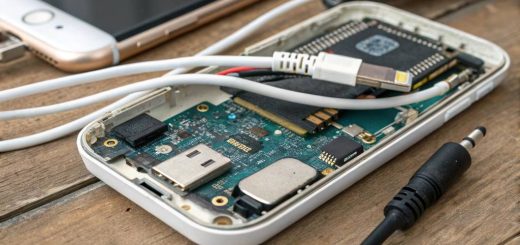Protecting your Devices During the Pandemic
The COVID-19 pandemic, which struck earlier this year, has made protection and safety paramount amongst humans. We’ve had to wear facial masks for protection from the virus and wash hands regularly after coming in contact with other people or surfaces used by others.
In this same vein, computer and network security should be kept protected at all times – especially after contact with the outside world. This could be through an Internet connection, document, or removable storage that has been in contact with other systems.
Malware, COVID & Pervasive Computing
Unlike COVID, malicious software has been around for a long time. They have only become prevalent because of the increase of Internet-driven operations seen over the last two decades.
Since computing became more pervasive, and we saw the introduction of the Internet of Things technology, malware attacks have also grown in number and sophistication due to its profitability. Reports even suggest that cybercrime is getting more profitable than the illegal drug trade.
Despite the already worrisome figures, the number of malware attacks that occurred during the COVID-19 pandemic skyrocketed.
Image from Pixabay.com
Malware Attacks through COVID-themed Information
Cybercriminals were able to perpetuate their attacks on a larger scale during this period by preying on the situation and switching to COVID-themed attacks due to the severity of the problem at hand. In the two ways discussed below, these malicious entities were able to conduct their attacks:
- COVID-related information: The pandemic was a new one, and this left virtually everyone in a state of constant anxiety. As there was no known cure at the time, people frequently searched for discoveries and home remedies to prevent or manage the virus if they or their loved one contracted it.
Information regarding the rate of spread and the use of facemasks was also all over the Internet. The quest for information allowed cybercriminals to mask links and informative ads as COVID-related information, luring people to download malware or give up sensitive personal information on fake websites under the guise of government grants or palliatives.
- Remote workers: The impact of the virus cut across several countries, forcing a partial or total lockdown in many countries worldwide. This meant offices had to shut down, and employees had to work from home. Given that home networks aren’t as secure as the ones in offices, many remote workers got their devices infected with malware giving way for cyberattacks to be conducted on home and office networks.
Categories of Malware
Malware is only an umbrella name for malicious software. Briefly explained are some of this malicious software and how they operate:
- Virus: an executable program that targets specific applications on a device and replicates itself only when clicked.
- Ransomware: just like the name sounds, this program seizes control of the files on a device until a decryption key or tool is used to regain access.
- Trojan: poses as an actual, reliable program, so it executes unsuspectedly on whatever device it occurs on. It could potentially damage a device.
- Worms: a self-replicating program that requires no human action to trigger its spread. It can also corrupt files on a device.
- Spyware: these programs spy on records and send the users’ activity to a hacker somewhere who either trades the information or uses them for ad targeting.
Malware in COVID-19 Contact Tracer Apps
Some of these malicious software has been discovered in Android applications disguised to be contact tracing applications. The Anomali Threat Research team found 12 fake applications targeted at citizens of 11 different countries. These applications were dubbed as contact tracing applications but were embedded with Trojans – Anubis and Spynote malware, which steals confidential data and monitors user activity.
In Canada mainly, the official COVID-19 application to be released by the Canadian government was cloned, and ransomware called CryCryptor was put in it. Soon enough, researchers from ESET released a decryption tool that could counter the effect of the ransomware and remove it from the device.
Keeping Your Devices and Network Safe
Taking all of these into account, measures should be put in place to check this ravaging menace. Discussed below are a few of them:
- Use Antimalware Software: Whether antivirus, antispyware, or antimalware software itself, this remains one of the most reliable ways of ensuring that no form of malicious software makes it into a device. These applications scan every document sent into the device and quarantines the infected ones or delete them out rightly – depending on the user settings.
- Use a VPN: Connections outside the home or office are often insecure, and that is why security experts advise against using public These connections are usually riddled with malicious actors who could stay on the connection to steal data, plant malware, and then gain access to a device or network. It is best to avoid public networks, but if you must connect to one, make sure you download a VPN app to encrypt your traffic.
- Employ Best Practices: These practices are often announced at workplaces and informal gatherings. Some of these are: avoid downloading untrusted documents from emails, do not fill personal details on any website that isn’t secure, and to set up periodic checks for malware on your device.
- Use a Firewall: A firewall stands between a network and the outside world, preventing unauthorized access or attacks from making it through to the network.
- Regularly Update Software: Operating System providers often release software updates containing security patches for vulnerabilities found in preceding versions. Updating system OS as soon as they are released could help keep devices and networks safe from cyberattacks.










